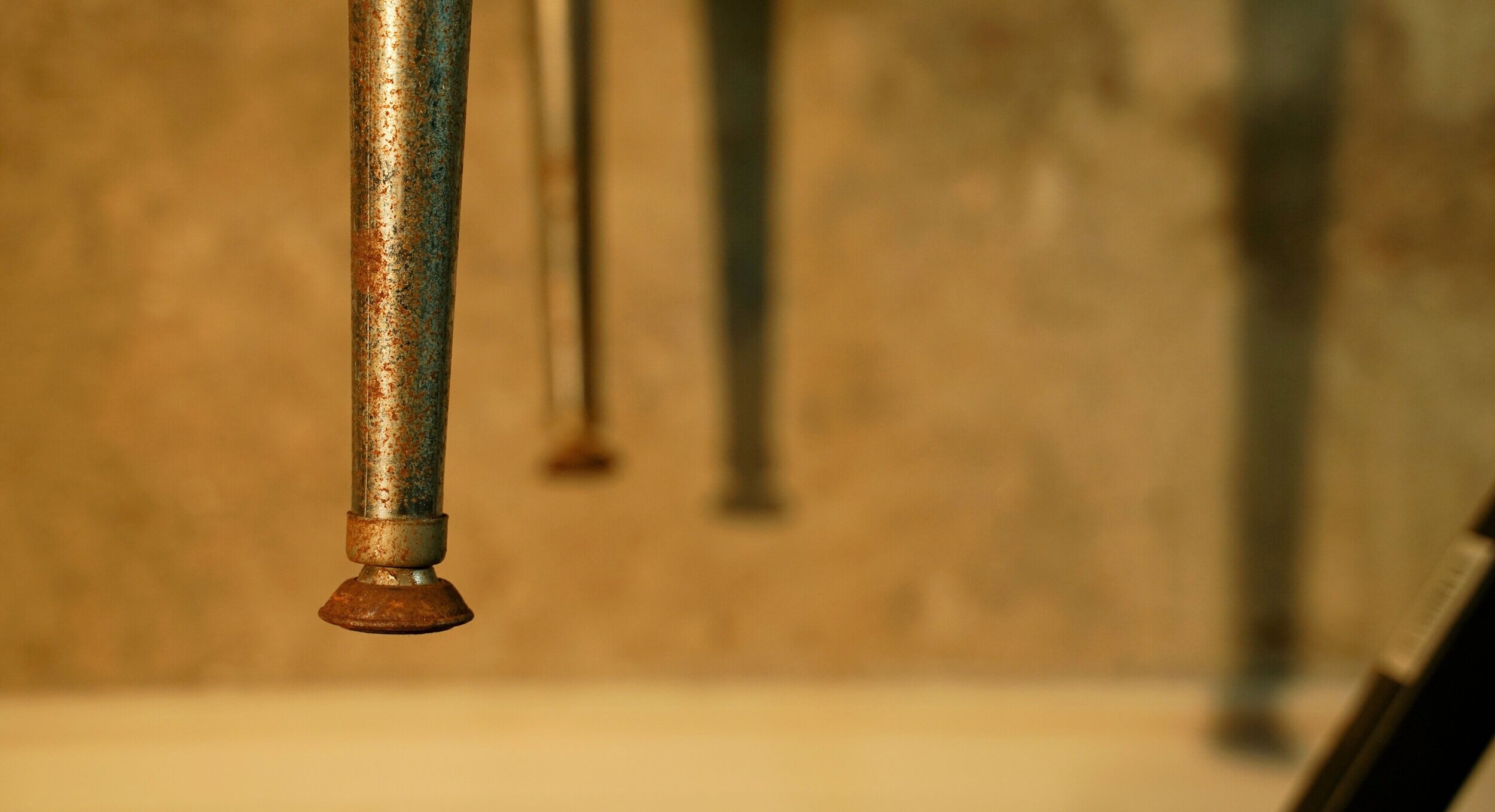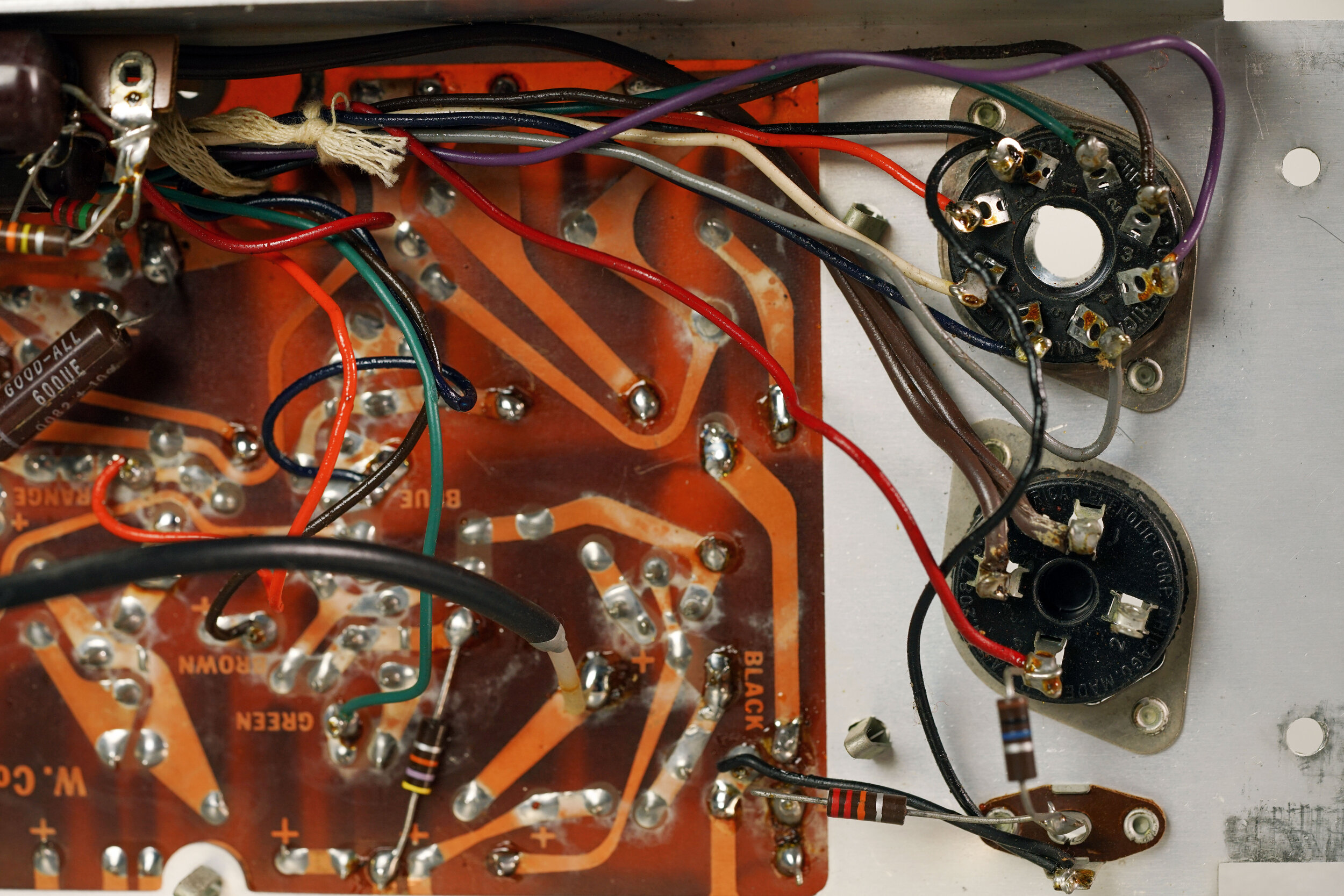On the Wurlitzer 700 Service Manual
The Wurlitzer 700 is the console version of the Wurlitzer 120, and its manual is very similar to the 120 manual. The 700 is the same keyboard, except that it is housed in a more traditional cabinet that resembles a spinet piano. The primary differences between the two manuals is that the 700 manual has photos and diagrams of the console.
The Wurlitzer 120 Pilot Light: a Neon Glow Lamp
The pilot light in all Wurlitzer 120 Electronic Pianos is unique. You may notice that when you turn on your 120 the lamp takes a few extra seconds to turn on. Likewise, when turning the amp off the pilot light may take a few seconds to turn off. It kind of does its own thing. That is because the pilot light (or lamp) is a neon glow lamp. Just when you thought the 120 couldn’t get any cooler, it has its very own neon sign to let you know when its on.
Gear Review: Our favorite power strip of all time
If you own vintage gear, you must have a really good outlet to plug it into. There are a lot of options for this, but our favorite is the Furman SS-6B power strip.
Our Furman SS-6B is easily the most essential thing in our studio. Not even exaggerating: it is a pleasure to plug things into this strip. If you have only ever used cheap, flimsy surge strips — or, God forbid, you’ve been plugging all your gear straight into the wall — you are honestly in for a treat when you use this thing. If I could return to any moment in my life, I’d choose the first time I plugged something into my Furman SS-6B, just to relive the surprise and delight of it.
Common Amplifier Malfunctions: The amp smells like it's burning.
There are two major reasons why an amp might smell like it’s burning:
The amplifier is covered in dust, which is in fact burning from the heat of the tubes
The amplifier is malfunctioning and a component is burning
If you have any doubt whether your amplifier is burning, you should turn it off and unplug it right away. However, you may be asking yourself, am I overreacting? Is it correct to be concerned about this burning smell? Or do old amps always smell this way?
Why We Love Wurlitzers with Built-In Leg Storage
Early Wurlitzer keyboards — the 112, 120, and 140-series — have built in leg storage. The outer lid (which is hopefully still present all these years!) has a space to firmly screw in the legs, as well as a little strap in the center to hold them in place. This is probably early Wurlitzers’ most underrated feature!
Common Tube Amp Malfunctions: My amp doesn't turn on.
The circuitry that turns the amp on and off is very simple: pretty much just some wiring that provides line voltage to the transformer. More commonly, this wiring is in great shape, voltage passes through it with no problem at all, the amp turns on, all the bad components inside receive all the power that the circuit can offer, and then the amp starts malfunctioning.
How to Tune a Wurlitzer Electronic Piano Reed
A Wurlitzer electronic piano is a unique instrument that uses a piano-like action assembly to strike metal reeds of various pitches to make sound. Like traditional acoustic pianos, a Wurlitzer electronic piano (or EP) has an action assembly with wooden hammers, keys, whips and dampers. However, the tone is generated when the hammer strikes a metal reed, whereas on acoustic piano a string is being struck. One simple principle remains the same though: longer or larger tone generators make lower-pitched notes, and shorter or smaller tone generators make higher-pitched notes.
How to De-Rust Wurlitzer Legs (or Any Oversized Item)
Chrome Wurlitzer 200 and 200a legs are often rusty. Unlike earlier models, the 200 and 200a do not have built-in leg storage. And chrome legs are often not stored as conscientiously as the keyboard itself — or, even if they were originally, they’re prone to rolling away (probably, as luck would have it, into the dampest corner of the room). Anyway, we’re happy anytime the original legs are present, regardless of their condition. (Without the built-in storage method, they are very easy to lose over a span of 35+ years!) And if they are covered in rust — good news! — it is easy to remove.
Why does my Wurlitzer 112 amp have a weird octal plug that goes nowhere?
The Wurlitzer 112 has a mysterious octal plug that appears to go nowhere. It is very similar to the wiring harness plug, except that it doesn’t end in a wire. It’s just a little black dome that occupies chassis real estate and doesn’t appear to do anything in particular.
On Speaker Impedance
All speakers have an impedance, usually 4 Ω, 8 Ω, or 16 Ω. For the best performance, you should match the impedance of your speakers to the output impedance of your amplifier. When the impedances match, the amp achieves the most efficient power transfer between the speaker and the amplifier. Power transfer, expressed in watts, affects the volume, drive, and overall sound quality of the amplifier.
How We Digitized the Wurlitzer Service Manuals
We are very excited to announce that our collection of Wurlitzer service manuals are available for download!
The Wurlitzer service manuals are a valuable resource in restoring Wurlitzer keyboards. Although they are not perfect, they contain a lot of interesting, useful, and historically important information. The 112 claims that it is not a guide on servicing pianos in “ten easy steps” (condescending air-quotes theirs!), but it kind of is. You should read the service manual corresponding to your Wurlitzer — and maybe even a few others, since a lot of the information can be applied across models.
Drawing the Line Between Troubleshooting an Amp and Modifying It
When you repair an amplifier, you have two choices. You can bring it back to its original state by fixing only what is broken. Or, you can improve the circuit by modding it.
There is a lot to love about an amplifier that is in fully-functioning, but original, condition. When using a vintage amp, you are playing music on a slice of time. You are combining two different musical periods in a way that is impossible to replicate with any other gear. It’s basically time travel.
How to Replace Wurlitzer 200 or 200a Metal Feet
If you have just scored a vintage Wurlitzer 200 or 200A, or perhaps you are just pulling one out of storage, you may find that the metal hardware has rusted or tarnished. Depending on where the Wurlitzer was stored, the chrome on the legs might have pitting and/or rust, and more than likely the feet have rust as well. In this article we are going to talk about how to replace the Wurlitzer feet. New Metal Wurlitzer feet are available in our shop and will be a closer match to the vintage chrome legs than the old dull feet. Also your studio floors will thank you!
Audio Recording at Home for Social Media
Whether you are a podcaster or a musician, capturing higher quality audio will make your content pop and grab your listener’s attention. That’s why graduating from apps and smartphones is something you have probably considered — and you would be right to do so. While the cameras on mobile devices are improving to a slight degree, their microphones are small and offer extremely poor sound quality. So, since we’ve decided you are going to aim for good sound quality, let’s go over the basics of how audio is recorded.
De-Rusting Rhodes & Wurlitzer Parts with Evapo-Rust
When restoring a Wurlitzer, there are a lot of really tedious and time-consuming steps: polishing keys, lubricating action parts, regulating, tuning, etc. We could go on and on — but we won’t, because today we are talking about rust removal, a task that is not on that list. Removing rust is easy and actually borderline fun because it only requires two things: a little Evapo-Rust and a few hours to kill while the product works its magic.
Checking and Changing the Fuse in Your Tube Amplifier
If your tube (or solid state) amplifier is not “turning on,” the cause of this problem could be a blown line fuse. The line fuse, also referred to as a mains fuse, is the fuse that stands between the main AC power and your power transformer. In an otherwise functional amp, the main fuse can and will blow when there is a problem between the wall outlet and your power transformer (PT). A fuse can also blow when there is a short somewhere in the amp. In either case, the fuse is doing its job when it blows and is protecting the amp by stopping it from running when there is a problem present that could harm the amp’s circuit.
How Vacuum Tubes Work
All tubes follow the same basic principles. Inside a tube’s glass enclosure, you have 1) a vacuum and 2) at least two electrodes (but often more, depending on what type of tube we’re talking about). Each electrode has a specific job: either releasing electrons, attracting electrons, or slowing down or speeding up the flow of electrons. We’ll talk about these jobs later. For now, the main thing that tubes are intended to direct electrical current from A to B in some way that is useful to the circuit.
What is the difference between a Wurlitzer 140 or 140b and a Wurlitzer 145?
The only true difference between 140-series and 145-series Wurlitzers is the amplifier. Both keyboards were released in the 1960s and represented a total redesign of the Wurlitzer electronic piano. Wurlitzer overhauled the mechanical action, revised the cabinet, and — for the first and only time — manufactured two parallel styles of amplifier: a solid state amp (the 140/140a/140b) and a tube amp (the 145).
Common Tube Amp Malfunctions: My amp makes no sound.
If your amp makes no sound, it is first important to define what you mean by “no sound.” To that end, the first test you should perform is whether you can hear anything coming from the speakers. (This is, of course, after you have eliminated the possibility of trivial problems.)
Listening to what (if anything) comes out of the speakers can help you isolate the problem to specific parts of the circuit. If you hear no sound coming from the speakers — including hum, hiss, reverb crash, input cable pop, or any other incidental, non-musical sounds — the problem could be the speaker itself. But, if you hear non-audio sound coming from the speakers, the problem is likely, although not guaranteed, to be a fault in the preamp section of the circuit.
Common Tube Amp Malfunctions: How to accurately diagnose what is wrong with your vintage amplifier.
If your amplifier isn’t working, the best thing you can do is describe the problem as accurately as possible. If you’re into DIY, using accurate terms will help you google your problem and give you the best search results. If you’re asking a tech or a friend for help, describing your problem with specificity helps them offer more relevant suggestions.




















